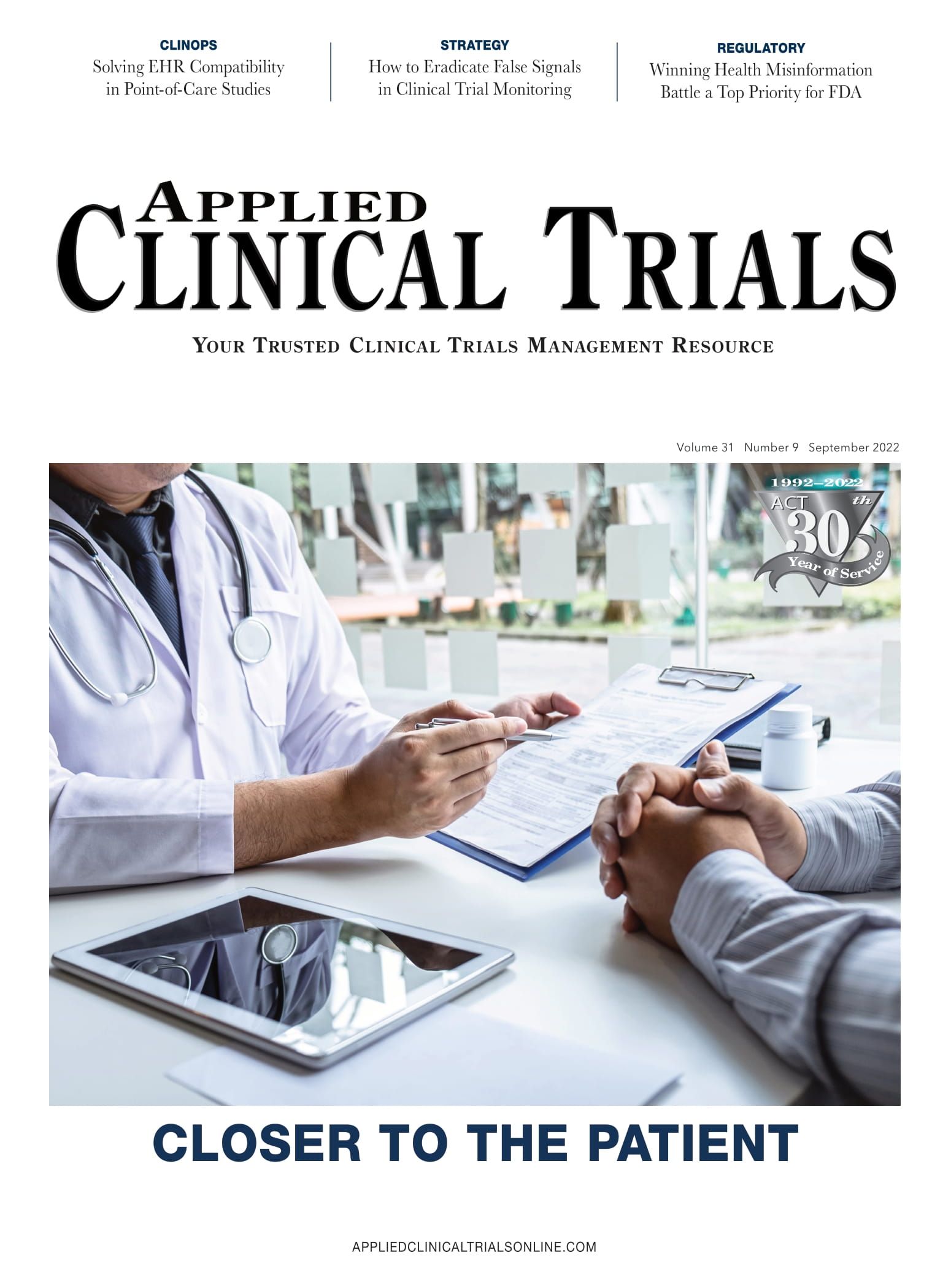Contemplating a Pressing Drug Development Paradox
The struggle to translate promising movements in R&D.

The drug development enterprise is undergoing a steady transformation catalyzed by three broad movements. Unfolding simultaneously, converging, each movement is interacting with and facilitating the others to ultimately realize a future where therapeutic innovation and healthcare delivery are highly customized to serve the needs of the individual patient.
Each broad movement holds great promise not only for patients living with and managing their disease, but also for driving improvements in drug development science and execution. The first—precision or personalized medicine—is based on deep understanding of the molecular basis (e.g., the genetic and biologic underpinnings) and the social determinants of disease. With support from large databases, informatics, technologies, and advanced analytics we’re able to target highly stratified patient subpopulations—eventually at the individual patient level—resulting in smaller and faster clinical trials, fewer adverse outcomes, greater likelihood of a treatment response, higher probability of approval, and lower overall development costs.
The personalized medicine movement in drug development has already delivered remarkable treatments to patients, most notably in oncology and immunology. And our pipelines have many more to come: Nearly all drugs in R&D for cancer-related diseases, and 60% in R&D for other diseases, now rely on genetic information and biomarker data. And almost 40% of all FDA approvals are now personalized medicines.
The patient engagement movement has instilled enterprise-wide passion and commitment and has produced a variety of approaches to amplify patient voices and inform our understanding of the unique needs that communities and individuals face when living with the burden of disease and when accommodating clinical research in their health journey.
Patient and community engagement informs and enriches clinical trial planning and the clinical trial participation experience; motivates our efforts to bring clinical trials to wherever and whenever patients can most easily and conveniently participate; and improves communication effectiveness, transparency and disclosure.
Ultimately this second movement ensures that we are measuring outcomes that are the most clinically meaningful and relevant as defined by the community living with a given disease; and promises to deliver more feasible, faster clinical trials with better enrollment and retention rates, proportional representation according to disease prevalence by race and ethnicity and other individual characteristics, fewer unplanned and un-budgeted protocol amendments, higher approval rates, and accelerated commercialization.
An assessment of articles referenced in PubMed shows a five-fold increase in the number of clinical trials supported by patient-centric practices between 2015 and 2020. A growing number of clinical trials, for example, are soliciting patient input (e.g., patient advisory boards and input panels) into protocol design and returning plain language clinical trial results summaries. In a small number of cases, they are returning unblinded personalized trial results.
Many clinical trials offer a wide variety of convenience-enhancing options, including transportation assistance; easier reimbursement and compensation; and virtual and remote (“decentralized”) support for clinical trial participants.
The third movement—the advent and adoption of digital technologies and data analytics—is enabling the collection of, and faster access to, much higher volumes of scientific and operating data that can be interrogated and shared, from which rich insights can be drawn and applied. This movement promises efficiency through automation and connectivity, improvements in data quality and research integrity, time savings and acceleration through faster data analysis, faster and more accurate recognition and response to data patterns, and the ability to anticipate risk and predict outcomes.
Growth in the volume and diversity of data that we are already collecting, curating, and managing is astounding. Each pivotal trial today collects an estimated 3.5 million datapoints, a four-fold increase in the average number of datapoints collected 10 years ago.
The many solutions and capabilities available ultimately give each individual patient options to participate in essentially custom-built clinical trial experiences.
A pressing paradox
Although these movements have been unfolding for at least 10 years, they have yet to achieve their compelling and anticipated benefits to drug development operations and execution. Research conducted by the Tufts Center for the Study of Drug Development and by others indicates that drug development failure rates are the highest they have ever been; the average overall duration of a development program and of a clinical trial by phase is not getting faster—they are taking longer and the durations are less predictable; recruitment and retention rates are at their lowest in history—particularly in oncology and rare diseases (two dominant segments of the R&D pipeline); the perennial 4% to 6% increase in overall R&D spending shows no sign of slowing; and we are observing higher levels of inefficiency and performance volatility.
A partial explanation for these outcomes lies in the paradoxical nature of our collective efforts to realize a future where therapeutic innovation and healthcare delivery are highly customized. Specifically, the closer we get to serving each individual patient, the more R&D personnel, infrastructure, collaborators, vendors, oversight, technology platforms, and solutions that must be engaged, deployed, coordinated, and integrated. Customization is offering seemingly exponential growth in the number of options to meet individual patient preferences and needs, but customization is also dramatically increasing scientific and operating complexity, fragmentation and scope – the very factors associated with and predictive of poor and inconsistent performance, inefficiency, rising cost and risk.
How can we address this paradox? How can these movements realize their full potential and promise?
It has been suggested that we cannot continue to use 20th century drug development operating models, cultures, and mindsets to optimize the value of 21st century solutions. Tufts CSDD research supports this notion. For decades, we have observed outliers and case examples that have delivered distinct performance, efficiency, and cost improvements. To name but a few: patient and community-engaged development planning; adaptive, master and novel protocol designs; highly targeted resource allocation and vendor selection; frequent communication; broad and open collaboration; and data sharing. But these examples have remained isolated instances.
COVID’s true legacy
Our remarkable success during the COVID-19 pandemic is widely acknowledged. Together, we have dramatically compressed drug development timelines and shortened between-phase transitions to deliver safe and effective vaccines and a burgeoning pipeline in unprecedented speed and efficiency.
We have long recognized the individual factors that ultimately contributed to our successful response:
- Trusted, open collaboration
- Public-private partnership
- Shared data and development risk
- Leveraged platforms and infrastructure
- Community and clinical care engagement
- Rapid deployment of virtual and
remote technology - Proactive and accommodating oversight
During the pandemic, the key was not the individual contributing factors, it was the simultaneous, cohesive, synchronous, and holistic way that these factors were managed, coordinated, and implemented by all stakeholders and partners across the global clinical research and clinical care enterprises. True, our experience during the pandemic exposed gaps and opportunities for improvement in infrastructure, including public messaging, community engagement, and last mile drug supply and delivery.
Our collective, collaborative response to the pandemic represents the “Mother” of all proof-of-concept tests and its legacy will be the way it unlocked a new drug development operating paradigm moving forward.
Can the singular focus of a global health crises be replicated in other areas of unmet medical need? We are already seeing development teams pushing the envelope and applying insights from the pandemic: they are forming larger, more open and agile collaborative teams; conducting more pragmatic and collaborative studies; leveraging more real-world evidence; and coordinating and integrating decentralized and clinical care infrastructure.
Lessons from our pandemic experience affirm much of what we have long known and so much more. They magnify and demonstrate a path forward toward realizing a future where each study volunteer participates in the right trial and where each individual patient receives the right treatment, in the right dose, at the right time.
